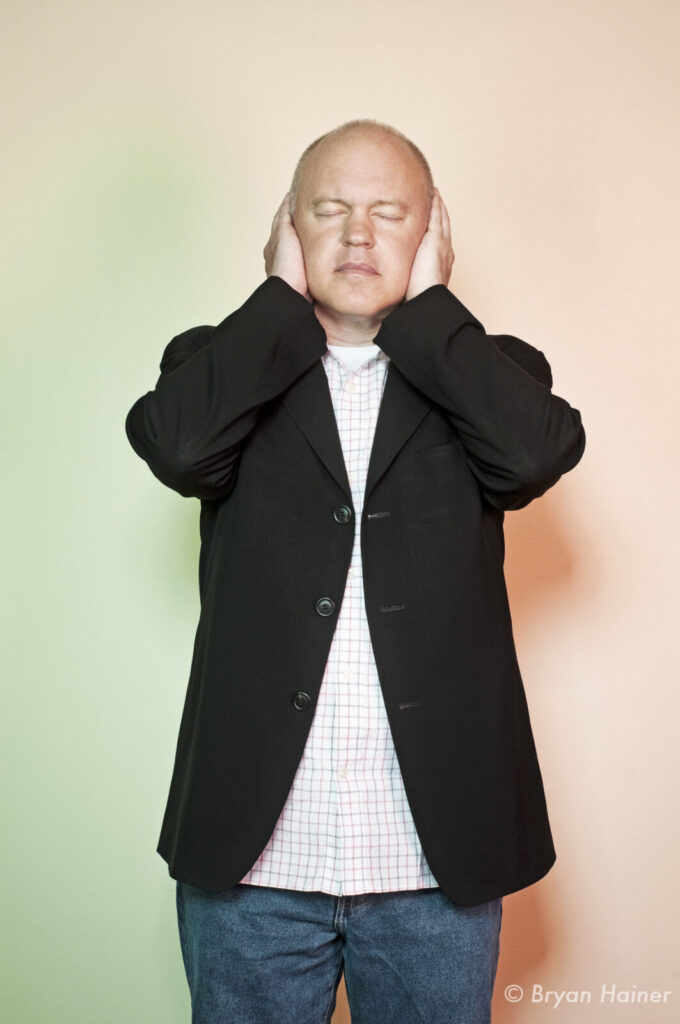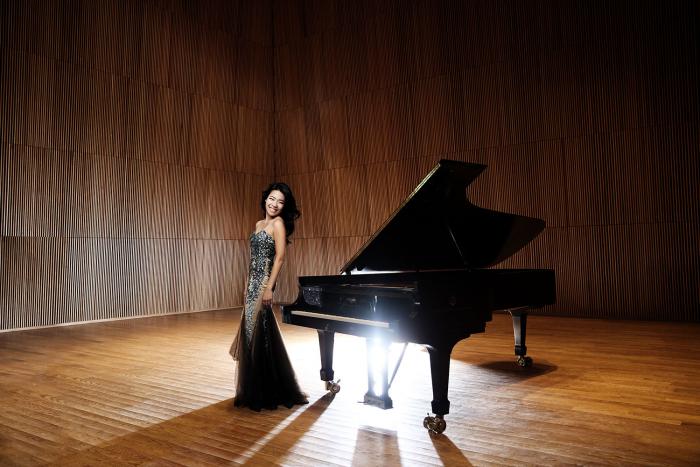As the audience filed into the concert hall, the orchestra onstage made an unholy din. Tuning their violins, practicing one particular phrase on the trumpet, testing out the reeds on the oboes one last time, the Lexington Philharmonic prepared itself to open their 2017-2018 season. Performing at the Singletary Center for the Arts, Maestro Scott Terrell and the Philharmonic presented a program that lived up to the title of the concert, Bright. With a variety of works in several styles and ‘voices,’ the Philharmonic had a glittering evening at the start of their year.
The concert began with a contemporary piece by the American composer Michael Torke. Torke is known for his synesthesia—he sees colors when he hears music. This particular piece, called Bright Blue Music, is a clear and straightforward exploration of that color. The Philharmonic proved a guide through the work, with a performance clear and straightforward enough to direct the listener’s ears to the development and unfolding of the piece.

A simple theme developed with a particular rhythmic flair, and the development clear and direct enough that even the most novice listener can follow the progression from one movement to the next. (Whether the listener sees blue a somewhat subjective matter: the whole piece read as rather yellow to me.) The brass would occasionally overwhelm the strings, though whether this was a problem of composer or conductor is unclear. Energetic and simple, but with enough surprises— and banging timpani here, a snap of the snare drums to cut off the winds and emphasize the strings, a screeching wail of the horns and flutes there— Maestro Terrell and the Philharmonic kept the piece from the monotony minimalist and post-minimalist music is often accused of.
The first half of the concert, however, was dominated by the Grieg Piano Concerto. Guest soloist Joyce Yang, a young pianist who is part of an emerging generation in the process of shaking up sometimes stuffy concert halls, took to the front and center of the stage and immediately commanded her instrument.

Yang played with her whole body— hunched over the keyboard for staccato descents, practically rising out of her bench for the dramatic flourishes up and down the keyboard that predominate the concerto. She would keep time by flicking her head this way and that, directing visual attention to an emphasis on a certain chord or progression. Said emphasis was pounded in by the relentless thundering of the keyboard; Grieg is not a subtle composer, and both soloist and orchestra went for the full melodrama. The piano roared, howled, clamored, practically leaped out at the audience. Very little of the concept was played at anything less than full volume and intensity.
While I appreciated it from the back of the house, I did worry about the eardrums of those whose tickets placed them closer to the action. And that action was powerful— at the end of a particularly intense cadenza towards the end of the first movement, Yang slammed down the final chord and her entire body rocketed away from the keys, so intense was the emotion. The audience, somewhat caught up in it, spontaneously applauded between the first and second movement (an unusual breach of symphony protocol, it caught Yang and Terrell off guard, which she covered with a quick bow).
The thundering, however, became a tad monochromatic towards the end of the piece. The keys of a piano cannot be pounded indefinitely without at a certain point pulverizing all sensitivity of some listeners’ ears. While a quiet and subtle treatment took over the beginning of the second movement, it was soon back to a total sonic offensive. And in the last few minutes, the never-ending proclamations of melodramatic stampeding up and down the piano and through the orchestra began to run together. There are only so many crescendos a performer can make before they top out at the height of emotion and intensity.
Regardless of any quirks in interpretation, the performance of the concerto was filled with a kind of wild energy— partly from the slightly strange harmonic progressions of Grieg, which foreshadowed Stravinsky and the chord clusters of modern concept music— but mostly from the infectious power bouncing back and forth between Yang, Terrell, and the orchestra. Soloist and conductor were obviously familiar with each other, as Terrell had only to glance at the piano, and Yang had only to give one of her nods, to open up the bellowing sororities of the full orchestra. The performance was an obvious and immediate crowd-pleaser: Yang and Terrell gave some half a dozen bows to a standing ovation.
After the bows and ovations were concluded, the orchestra took an interval in which the technical crew replaced Yang’s piano with two harps and a handful of specialist wind instruments, a rather large choir joined the orchestra, and I furiously scribbled notes onto a writing pad.
Maestro Terrell dashed back onto the stage and immediately threw himself into the downbeat of the first piece of the second half, selections from Ginastera’s ballet Estancia.
This music was simply tremendous. In writing a ballet about Argentine farmers and cowboys, Ginastera hit upon the muscular and vibrantly beating heart of Latin American concert music, which more than any other tradition (at least to my mind) is written for the average listener to immediately grasp on to and not just understand, but deeply enjoy. While the second half of the evening was entirely ballet music— music written to dance to— Ginastera’s selections from Estancia were imbued with the kind of infectious danceability that quite literally gets people moving.
Even Maestro Terrell was affected, jumping up and down on the podium in his excitement for particular slams of the timpani, never more expressive than when Ginastera pins his entire dance rhythm to the drums. The percussion section as a whole did some really tremendous work with Estancia— using everything from a tambourine to a marimba to a bass drum that literally shook the seats, Estancia was not just a musical but a physical experience.
After the Dionysian delights of Ginastera’s dance music, the concert closed with the more Apollonian music of Ravel.
Full of coloristic flourishes and effective at creating an entire atmosphere from only a few rich chords, Ravel’s Suite No. 2 from Daphnis et Chloe is a distinctly French take on a Greek story. The impressionistic and almost totally a-melodic music of Ravel immerses the listener into a world of impressions, of not quite distinct color.
The orchestra carried off this task— not the easiest one— with aplomb. Aided by an extensive choir, the piece moved seamlessly from one overstuffed and pregnant bloom of chromatic color to the next. As a set of selections from a larger ballet, and as a more moment-to-moment composition than a more melodically dominated piece might be, it would have been dangerously easy for the orchestra to present a disconnected and incoherent series of flashes in the musical pan. The deft baton of Terrell, however, maintained a clean and clear pace throughout the piece, and his direction charted a course and current that connected the brightest climaxes and the quietest flutters of the flute into a single whole. The choirs, normally a focal point of attention for the listener, blended seamlessly into the tapestry of the orchestra, becoming simply another color in the palette of composer and conductor. The overall effect, while certainly magical, was artfully restrained and balanced.
With a varied and virtuosic start to the season, the Lexington Philharmonic has proved not just worthy of their hall, but worthy of their audience.
(Photos by Richie Wireman unless otherwise credited)




